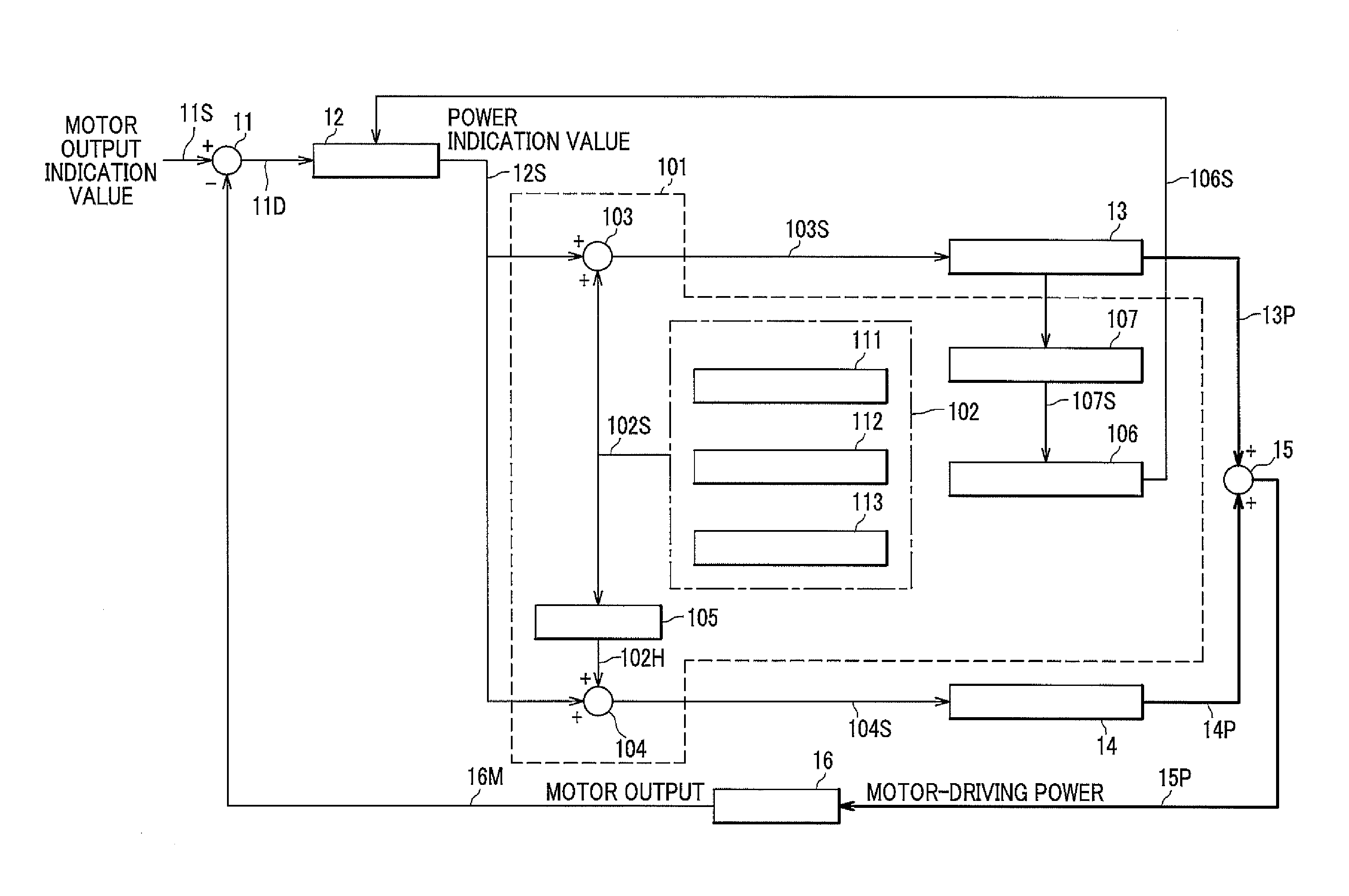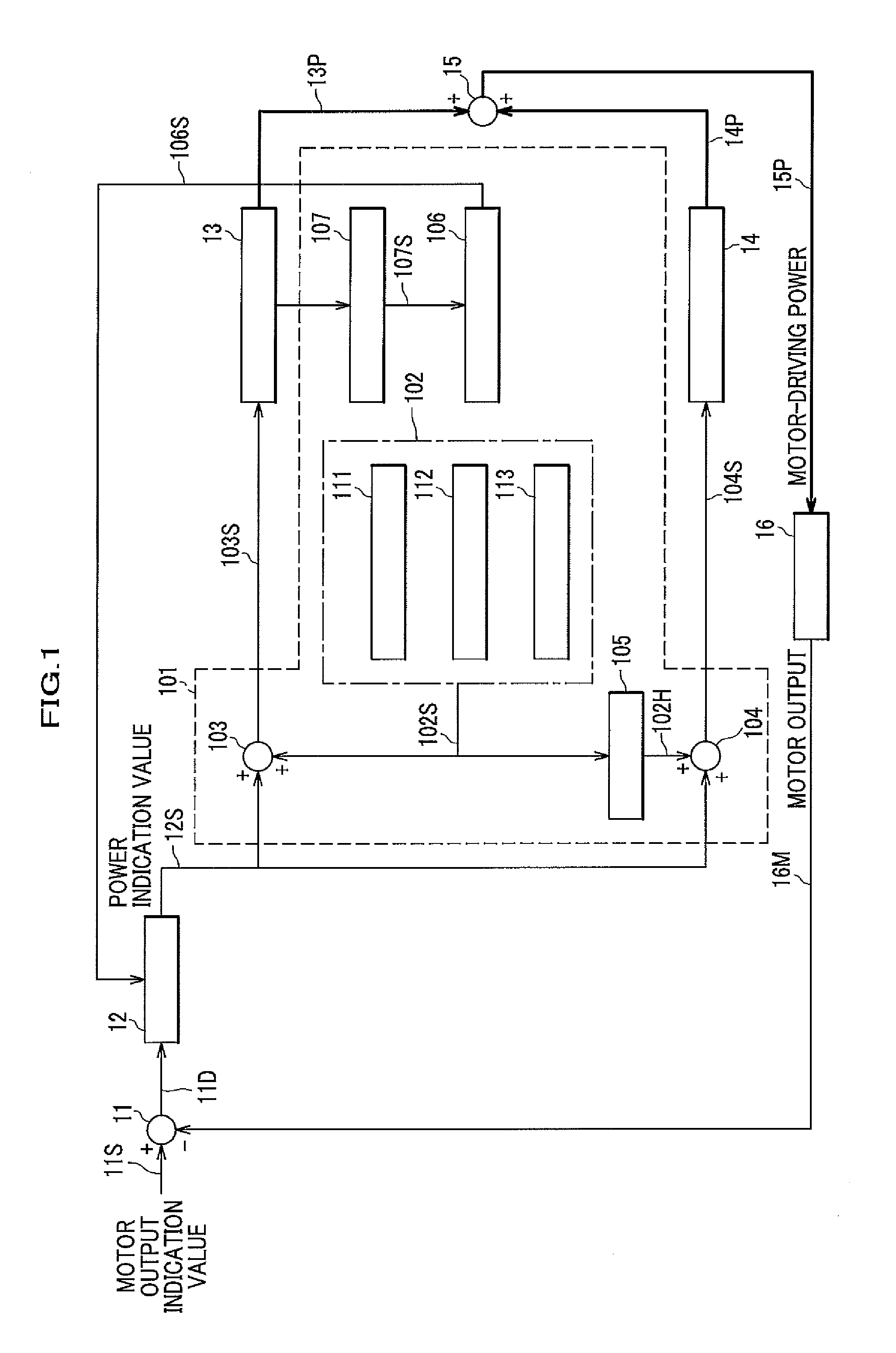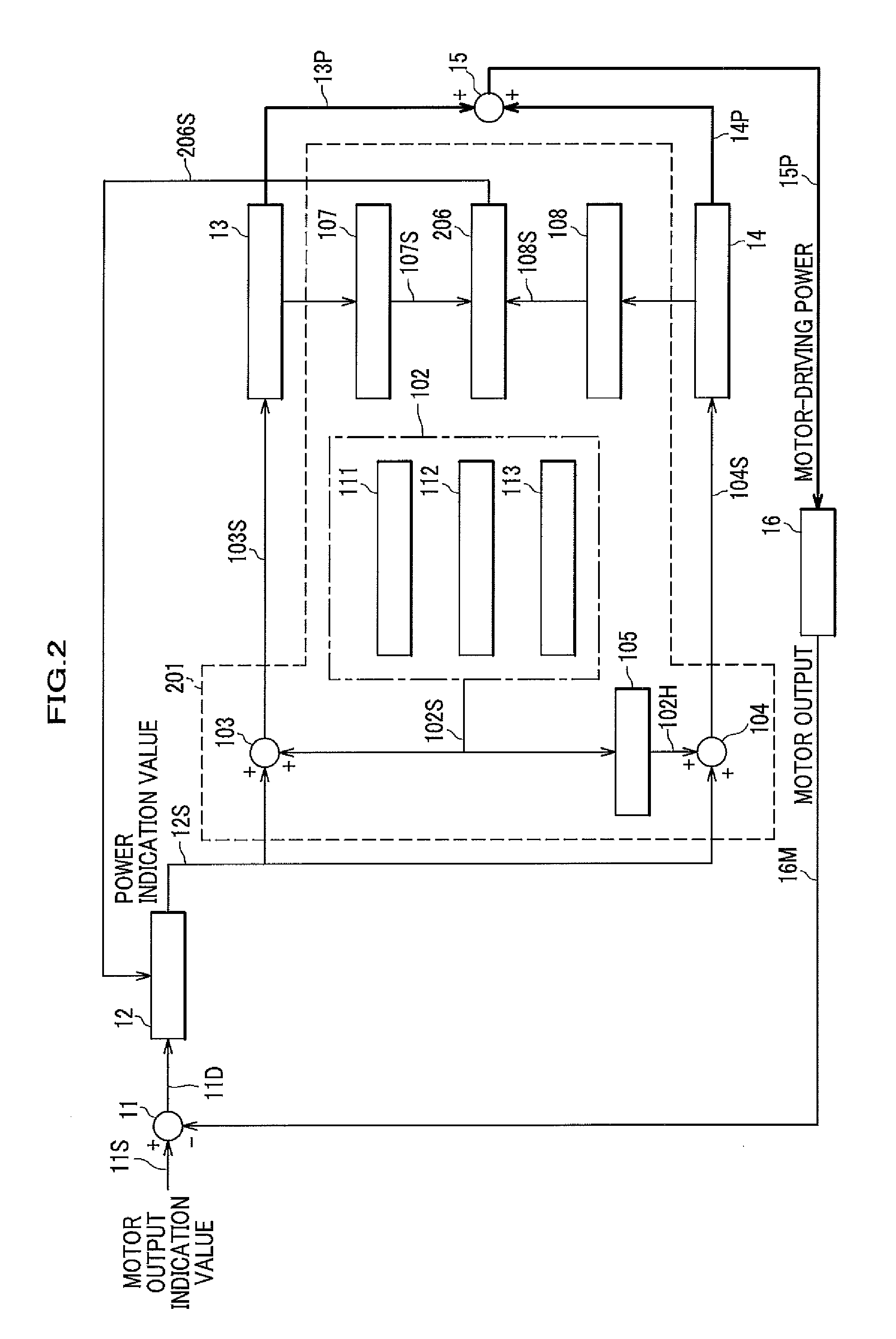Method for sequentially measuring impedance, measurement device, and fuel cell system
- Summary
- Abstract
- Description
- Claims
- Application Information
AI Technical Summary
Benefits of technology
Problems solved by technology
Method used
Image
Examples
first embodiment
Sequential Impedance Measurement Device
[0048]FIG. 1 illustrates the first configuration in which a fuel cell vehicle includes a sequential impedance measurement device according to the first embodiment of the present invention.
[0049]In FIG. 1, a sequential impedance measurement device 101 according to the first embodiment of the present invention includes an FFT impedance-measuring-signal-generating unit 102, a first signal-adding unit 103, and a second signal-adding unit 104, a signal-inverting unit 105, an impedance calculator (designated as “IMP CALCULATOR” in FIG. 1) 106, and a current and voltage measuring unit 107.
[0050]In addition, the FFT impedance-measuring-signal generating unit 102 includes an M-sequence-signal-generating section 111, a superimposed-signal-generating section 112, and a signal-processing section 113.
[0051]A fuel cell vehicle (not shown) includes a fuel cell 13 which is a power source for driving a vehicle, a battery 14 which serves as an aid for the fuel c...
second embodiment
Sequential Impedance Measurement Device
[0073]FIG. 2 illustrates the second configuration in which a fuel cell vehicle includes a sequential impedance measurement device according to the second embodiment of the present invention.
[0074]FIG. 2 differs from FIG. 1 in that a sequential impedance measurement device 201 further includes a second current and voltage measuring unit 108. The unit determines current and voltage values of the battery 14. Then, the unit sends to an impedance calculator 206 the values as a measured current and voltage value 108S.
[0075]The impedance calculator 206 performs not only an impedance calculation of the fuel cell 13 but also that of the battery 14. After that, the impedance calculator transmits an impedance-value-indicating signal 206S regarding the fuel cell 13 and the battery 14 to the control processor 12. Finally, the control processor 12 refers to the impedance values of the fuel cell 13 and battery 14 to control the power indication value 12S.
[007...
third embodiment
Method for Sequentially Measuring Impedance
[0089]The following below describes another embodiment, a method for sequentially measuring impedance according to the third embodiment of the present invention.
(Flow of Impedance Measurement Processed by FFT Processing)
[0090]The following illustrates how to process an impedance measurement by FFT processing in a method for sequentially measuring impedance.
[0091]FIG. 4 is a flow chart illustrating how to process an impedance measurement by FFT processing. The flow chart describes each step one by one.
401>>
[0092]First, an M-sequence signal is determined. The M-sequence has various patterns such as a short one and a long one. Depending on a calculation time (calculation speed) and precision conditions involving a calculation, the M-sequence signal is selected and determined.
[0093]Note that in FIG. 3, the M-sequence-signal-generating section 311 of the FFT impedance-measuring-signal-generating unit 302 determines the M-sequence signal.
[0094]Of...
PUM
 Login to View More
Login to View More Abstract
Description
Claims
Application Information
 Login to View More
Login to View More - R&D
- Intellectual Property
- Life Sciences
- Materials
- Tech Scout
- Unparalleled Data Quality
- Higher Quality Content
- 60% Fewer Hallucinations
Browse by: Latest US Patents, China's latest patents, Technical Efficacy Thesaurus, Application Domain, Technology Topic, Popular Technical Reports.
© 2025 PatSnap. All rights reserved.Legal|Privacy policy|Modern Slavery Act Transparency Statement|Sitemap|About US| Contact US: help@patsnap.com



